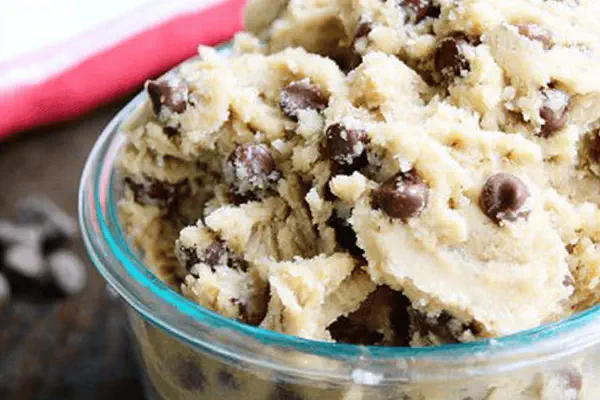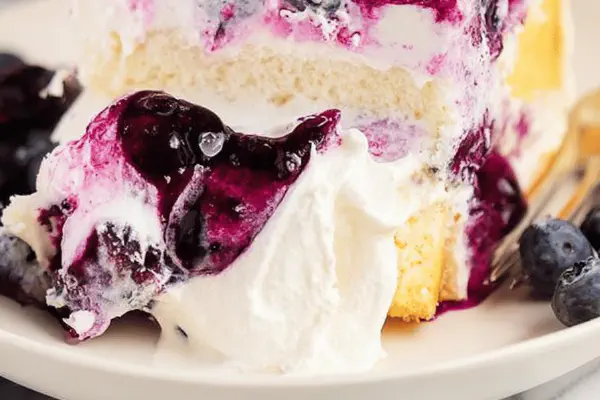Edible Choco Dough Remix

E
By Emma
Certified Culinary Professional
•
Recipe tested & approved
Butter beaten with sugar till fluffy. Vanilla spiked in. Flour swapped for oat flour keeps it tender and chewy. Baking powder replaces soda for subtle lift. Salt balances sweetness. Chocolate chunks—real pieces, not just chips—folded in. Chill till firm but scoopable. Raw flour warning beaten by heat-treatment or oat substitution. Keeps cold, melts creamy in mouth. No eggs, no heat required, just mix and fridge. Perfect snack for sneaky fingers and late night cravings. Less sweet, more chew. Texture and taste controlled by flour tweak. Cream first, add dry gradually. Refrigerate—takes firmness and flavor melding seriously. Always sniff after chilling. If buttery smell off, swap fresh. Chocolate choice changes bite drastically—dark or milk, your call.
Prep:
11 min
Cook:
0 min
Total:
11 min
Servings:
8 servings
#no bake
#oat flour
#chocolate chunks
#raw dough
#snack recipes
#vegetarian
#easy dessert
Raw cookie dough obsession started with childhood sneaks from mixing bowls. But eggs and untreated flour scared me off. Years of hairpin turns and batch tweaks taught me oat flour’s magic–safer, softer, tastier. Baking powder swapped in instead of soda to reduce harsh flavor but still loosen crumb. Butter mixing technique is the cornerstone; rushed or sloppy creaming dulls the texture, makes dull dough. Sugar type and quantity leaned down a touch after testing cloying versions. And chocolate chunks, none of those mini chips—chunks bring contrast in every bite; melty, chewy. Refrigeration isn’t optional; it’s where flavors marry and dough firms just enough. Practical kitchen hacks included for if you don’t trust raw flour; heat-treatment or oat flour does the job. Flavor balance tight; butter quality trumps cheaper options—flavor changes noticeable at first bite. Experience dictates rhythm more than timers; knowing when buttery aroma blooms, when dough feels pliable, that’s mastery.
Ingredients
- 115g unsalted butter softened
- 100g organic cane sugar
- 1 tsp pure vanilla extract
- 130g heat-treated oat flour
- ½ tsp baking powder
- ⅛ tsp fine sea salt
- 120g bittersweet chocolate chunks
About the ingredients
Butter plays more than just fat carrier; temperature controls dough cohesion and flavor distribution. I swap organic cane sugar for white or brown depending on yield desired; brown brings moisture but can dilute crispness. Vanilla extract intensity varies—my advice: always add less initially; you can flavor gradually for batches. Oat flour is shield and texture tweak; raw wheat flour carries risk and dryness. Heat treating flour is alternative but tedious. Baking powder instead of baking soda softens the edge and adds tiny loft, making dough lighter. Salt is the silent flavor enhancer; never omit or your dough tastes flat. Chocolate chunks are personal choice; experiment with dark vs milk for flavor depth. Always buy good-quality butter; it can make or break raw dough. If allergies or vegan, substitute butter with coconut oil but expect texture shift—a tad more fragile dough.
Method
Mix phase
- Butter needs beating until pale and fluffy—takes 2 to 3 minutes; listen to the sound change from dull to creamy glide.
- Add sugar gradually; graininess dissolving signals proper creaming; too fast makes gritty dough; patience pays.
- Stir in vanilla extract off the mixer speed; 20 seconds max—volatiles escape quickly; keep aroma intact.
Dry folded in
- Sift and add oat flour combined with baking powder and salt; sift keeps clumps out; oat flour replaces regular to kill bacteria and soften bite.
- Don’t overmix here; just fold with spatula or lowest mixer; overworked flour makes dough dense and crumbly; stop when almost combined.
Chocolate chunk incorporation
- Fold in chocolate chunks by hand; even large pieces provide pockets of texture and melty bursts.
Chill and store
- Press dough into sealable container; flatten top for even chilling.
- Keep refrigerated minimum 50 minutes till dough feels firm but not rock hard; scoop test by pressing with finger.
- If dough feels greasy, add pinch more oat flour next time or chill longer.
Troubleshooting
- If dough too crumbly add teaspoon of milk or cream; too sticky add flour base.
- If vanilla too bold, reduce next batch by half teaspoon to avoid masking chocolate.
- Butter temperature crucial; too cold lumps, too soft oiliness; room temp just shy of melt works best.
Cooking tips
The sequence matters—creaming butter and sugar introduces air, creating a lighter base. Mixing vanilla on slower speeds or off mixer helps retain aroma; heat dissipates it fast. Sifting and folding in flour instead of dumping prevents streaky dough and oversaturation. Overmixing after dry incorporation brings gluten in oats—but minimal, key is light folding to just bring ingredients together; too much and dough toughens. Chocolate chunk folding last protects chunks from breaking and melting prematurely. Chilling dough is not just convenience; it firms fats and hydrates ingredients, improving final mouthfeel. Use a spatula to press dough flat in container for even chilling. Refrigeration time varies but finger press should confirm pliability without stickiness. If dough is sticky on hands, chill further; if crumbly, add small liquid or flour next batch. Trust eyes and touch over timers at every stage; oven isn’t involved but temperature matters for butter softness and mixing ease.
Chef's notes
- 💡 Butter softness varies big time. Too cold? Lumpy dough, poor creaming. Too warm? Melted oily mess. Aim for room temp just shy of melt. Tap spatula, listen for creamy glide, not slosh. Patience pays here—2 to 3 mins beating changes texture and feel. Sounds shift from dull to smooth, signals air infusion; measure by ear and look.
- 💡 Mix sugar slow, graininess disappears, you’ll feel texture change, that’s when to stop adding fast. Too quick, dough turns gritty. Vanilla comes last; add off mixer or very slow speed. Keep mix under 20 secs for aroma not burnt off. Volatile flavors vanish fast if overheated. Pour, stir, then fold dry ingredients gently.
- 💡 Oat flour replaces wheat here, kills bacteria risk. Heat treated best if worried. Sift flour, baking powder and salt together. Folding, not mixing, keeps light crumb and chew. Overfolding triggers oat gluten, thick, dense dough follows; stop at almost combined. Chocolate chunks fold in last, by hand, so big bits stay whole, no melting or breakage.
- 💡 Chill dough minimum 50 mins. Press flat in container for even firmness; dough texture shifts cold, fats firm, flavors meld. Fingers press test dough firmness; scoopable means right balance. Sticky? Longer chill or add bit flour next batch. Greasy? Same fix or adjust butter temp. Temperature rules here over clocks.
- 💡 If dough crumbly, add teaspoon milk or cream next batch. Sticky? Flour boost helps. Vanilla too strong? Cut next batch vanilla in half teaspoon increments. Chocolate type affects bite a lot; dark means bitter depth, milk adds creaminess. Butter quality drives aroma stability; cheaper fat dulls every bite. Use good butter or expect flat flavor.
Common questions
Can I swap oat flour?
Wheat flour risk raw bacteria. Heat treat wheat flour if you go that route. Coconut flour dries texture too much; others not tested. Remember oat flour softness key for chew.
Why fold dry ingredients not mix?
Overmixing builds oat protein network—dense dough follows. Light folding preserves chewiness and crumb. Less is more, stop when flour just hides. Excess mixing hurts texture.
Dough sticky when chilling?
Chill more time first. Sometimes fudge with small flour pinch if still sticky after hour. Butter soft temp at start also affects stickiness during cooling stage.
How long store dough?
Refrigerate up to 3 days; airtight critical. Freeze possible, but texture can shift. Thaw slow in fridge, remix lightly. Not designed for room temp storage long.



